Tibetan Monastery: how to plan a Tibet Monastery tour
Tibetan monasteries play a huge part in the religious culture and identity of Tibetan Buddhism and Buddhists, and all represent one of the five major religious sects of Tibetan Buddhism. In Buddhism, a monastery is the place where a community of people who have chosen to withdraw from normal society and devote their lives to religious practices reside.
The foundation of Buddhism in Tibet, monasticism did not come with the introduction of Buddhism to Tibet, but followed later, with the first monastery being Samye Monastery, established by Padmasambhava during his visit to Tibet to revive Buddhism in the region in the 8th century. Once, more than 6,000 monasteries were spread across the Tibetan plateau, though now only around 85 working monasteries remain.
CONTENT
Tibetan Monastery in Lhasa
Potala Palace - Highest Palace in the World
Founded in the 17th century by the fifth Dalai Lama to replace the original seat of monastic power in Tibet, the Potala palace is not strictly a monastery, but always housed monks, most of whom worked in the ancient Tibetan theocratic government. One of the most iconic landmarks in Tibet, the Red and White palaces stand on the top of the Red Hill, on the site of an ancient Dzong that was built in the 7th century. The palace is now a UNESCO World Heritage Site and museum, though it is still the traditional winter palace of the Dalai Lama. It is open seven days a week from 9:30am to 3:00pm (for last entry), and costs 200 yuan per person in the peak season from May to October, and 100 yuan per person from November to April.
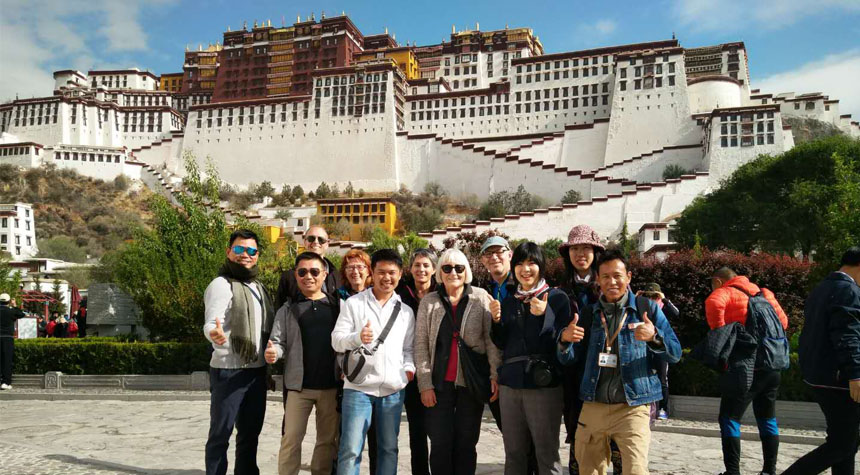 Potala Palace
Potala PalaceJokhang Temple - Spiritual Heart of Tibet
The ancient 7th century temple of Jokhang is the true spiritual heart of Tibetan Buddhism, and the most iconic man-made pilgrimage destination on the plateau. Founded in 647 AD by the Tibetan king, Songtsen Gampo, the temple houses the gilded statue of Jowo Sakyamuni Buddha, brought to Tibet on the occasion of his marriage to Princess Wencheng of the Tang Dynasty. The Jokhang Temple is the oldest temple of its kind in Tibet, and is highly revered by Tibetan Buddhists from around the world. Located in the heart of Lhasa, this stunning temple was originally known as the Rasa Trulnang Tsuglag Khang Temple, and the name was changed in 710 AD to Jokhang, which means “Shrine of the Jowo”.
Drepung Monastery - Largest Monastery in Tibet
Built in 1416, Drepung Monastery is the former seat of the Dalai Lama, prior to the construction of the Potala Palace. Historically, the monastery is the most significant in Tibet, and is the primary seat of the Gelugpa School of Tibetan Buddhism, the largest and dominant Buddhist sect in Tibet. At its peak, this unique monastery held more than 15,000 monks, and even today, it is still a prestigious monastery, with seven colleges teaching the different aspects of Buddhism. Located around 8 kilometers to the west of the center of Lhasa, the monastery lies at the foot of Mount Gambo Utse, and the huge number of white-roofed monastic houses gave the monastery its name of the “Rice Heap” monastery.
Sera Monastery - Famous for Tibetan Buddhist Debating
One of the most beautiful monastic compounds in Tibet, Sera Monastery is one of the great religious university institutes in Tibet, and still holds lessons for novitiates to Tibetan Buddhism. Built on the gentle slopes of a hill around 6km to the north of the center of Lhasa, the white stone walls, stone cobbled roads, and sun-bleached landscape make it feel more Mediterranean than Asian. Founded in 1419, Sera Monastery was the last of the Great Monasteries of the Gelug Sect, but is one of the most amazing of all the monasteries in Tibet. The monastery is renowned for its unusual monastic debates, which are held daily (except Sunday) in the debating courtyard. The debates are held between young monks, and are unique in that the monks use every part of their body to emphasize their points. While these debates are a major part of their Buddhist learning, they are one of the most enjoyable religious experiences in Tibet.
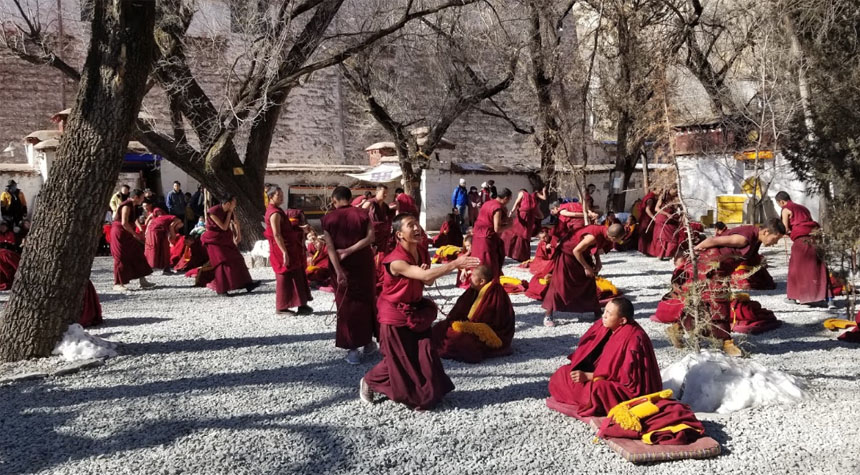 Sera Monastery Monks Debating
Sera Monastery Monks DebatingGanden Monastery - First and Primary Monastery of the Gelug School of Tibetan Buddhism
Ganden Monastery was founded in 1409 by Je Tsongkhapa, the founder of the Gelugpa or Yellow Hat sect, and lies just below the peak of Mount Wangbur, some 30 kilometers to the east of Lhasa city center. The largest of the Gelugpa Monasteries in Tibet, it was also the first Gelug-dedicated monastery in the region, and is one of the most influential monasteries in Tibetan Buddhism. Comprising of a number of different halls and Lhakhangs, Ganden Monastery lies in one of the most stunning valleys to the east of Lhasa, and offers visitors some outstanding views, as well as some awe-inspiring experiences inside.
Drak Yerpa Monastery - Famous Tibetan Monastery on Cliff
Only a short distance to the east of Lhasa, on a hillside in Dagzê County, Drak Yerpa Monastery is the site of a number of small shrines and hermitages. The site also contains some of Tibet’s earliest meditation sites in the cliffs around the monastery. The temple of Drak Yerpa was founded in the 7th century by the Tibetan wife of Songtsen Gampo, Monza Triucham. The king and his foreign queens are said to have meditated in the small shrines here, and even Padmasambhava and his consort, Yeshe Tsogyal, practiced Tantric yoga here for around seven months in the Dawa Puk. The Yerpa Valley is one of the most important centers of meditation in the world, and has seen the likes of Atisha and Trisong Detsen, and was the hiding place of Lhalung Pelgyi Dorje after he assassinated the anti-Buddhist King Langdarma in 842 AD.
How to Plan a Lhasa Monastery Tour?
If you are planning a tour of the major monasteries of Tibet, then we have the ideal tour for you, our 6 Days Lhasa Small Group Train Tour with Three Major Monasteries. One of the best tours for experiencing the uniqueness of Tibetan Buddhist monasteries, you will get to visit the monasteries and temples around Lhasa. The first day of the tour takes you to the stunning Potala Palace, on its high hill overlooking the city, as well as the sacred Jokhang Temple, the sacred pilgrimage destination in Lhasa.
The second day of the tour will give you the opportunity to visit the university monasteries of Drepung and Sera, where you will be able to watch the monastic debates at Sera and even pray with the monks in the great hall in Drepung. On day three, you will head out of the city to visit the Ganden Monastery, the third of the Great Three monasteries you will visit in Tibet and the location of the tomb of Je Tsongkhapa. Then you will continue on to the Drak Yerpa Monastery, and visit the hermitage and meditation sites that this ancient monastery is renowned for.
The tour starts in Xining with a train ride across the vast Tibetan plateau to the capital, and if the six major monasteries of the area are not enough, we can easily tailor your tour to cover other aspects of the plateau, including places like the Drigung Til Monastery in Maizhokunggar County, the seat of the Drikung Kagyu tradition of Tibetan Buddhism.
Tibetan Monastery in Shigatse
Palkhor Monastery and Kumbum Stupa - Three Sects of Tibetan Buddhism in One Temple
Located in Gyantse, once the largest town in ancient Tibet, the Pelkor Chode Monastery, also known as the Palkhor or Palcho Monastery, is one of only a monasteries in Tibet where you can find more than one sect under the same roof. In fact, the monastery houses three schools of Tibetan Buddhism, and is the only monastery of its kind in Tibet. The monastery was built following the death of the anti-Buddhist King Langdarma as an attempt to continue the Yarlung Dynasty of Tibetan kings, and was originally a monastery of the Sakya Sect. The monastery contains colleges from the Sakya School, the Kagyu School, and the dominant Gelug School.
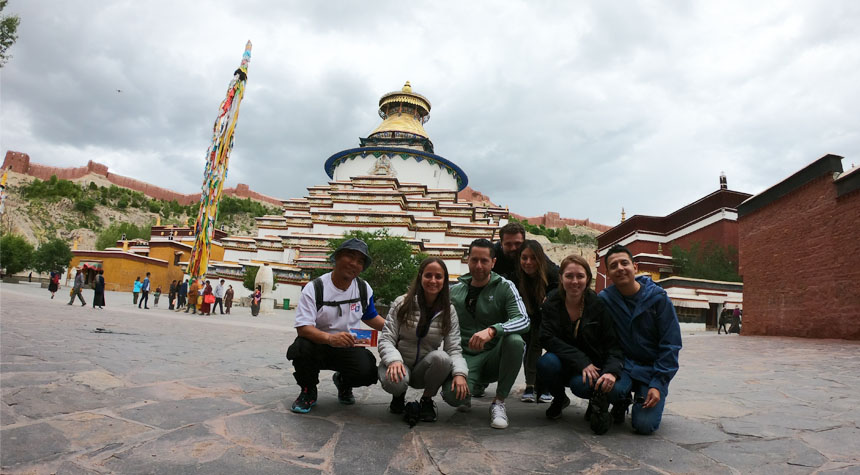 Pelkor Chode Monastery
Pelkor Chode MonasteryThe monastery is also the home of the stunning Kumbum Stupa, the only stupa of its kind in Tibet. Standing 32 meters tall and containing 108 chapels over nine tiers, the stupa was built in 1418 and was sponsored by a local nobleman. The stupa is capped by a golden roof, and visitors can follow the clockwise route up through the various floors and chapels to the top.
Gyantse Dzong - Gyantse Fortress & Fabulous Views of Palcho Monastery
One of the best-preserved Dzongs in Tibet, this ancient fortress was constructed in 1390 to guard the southern approach to the Tsangpo Valley and the Tibetan capital of Lhasa. Perched high above the town of Gyantse on a spur of jagged rock, the original fortress on the site was built by the son of King Langdarma, and in 1365, a palace was built over the fortress by a prince who was in favor with the southern Sakyapa monks. The Dzong complex was further expanded later in the 14th century, and the royal residence was moved here from the original palace at the entrance to the valley. Later, the Samphel Rinchenling Temple was built beside the Dzong. The views from the Dzong are spectacular out over the valleys, and the fortress dominates the town and plains surrounding it.
Pala Manor - History of Pala Family & Epitome of Tibet’s Past
Located in Banjorlhunbo Village, on the Southern Bank of the Nagchu River in Gyantse County, Pala Manor is the former residence of one of the most influential and powerful noble clans in Tibetan history. The manor building is a three-storey house around an interior courtyard, a common design for noble homes in Tibet at the time. The modern Pala Manor still has 57 houses in the grounds of the estate in which it stands, and the interior of the manor house contains rich decorations, elaborate furnishings, and the cruel tools used to punish the more than 3,000 slaves and serfs that the Pala family owned. You can also still see the horrifying conditions in which the serfs and slaves lived in the outlying cabins. While this manor is a classic example of how the rich and entitled lived in Tibet under the rule of the Dalai Lama, right up to the 1950’s, it is interesting to note that the original lord of the manor was Bhutanese, who escaped the civil unrest in Bhutan in the early 20th century and became a local official in the area.
Shigatse Dzong - Close Resemblance to the Potala Palace & Scenic View of Shigatse Town and Tashilhunpo Monastery
Once the royal residence of the ancient kings of Tsang, the rebuilt Dzong on the hilltop overlooking the city of Shigatse is one of the most striking fortresses in Tibet. Built in the 17th century by the king of the Tsang Region, Karma Phuntso Namgyel, the Dzong bears a remarkable resemblance to the Potala palace, and some believe that it was the inspiration for the design of Lhasa’s most iconic landmark. The Dzong was massively damaged during the Mongol invasion of Tibet in the late 17th century. However, the Dzong has been rebuilt based on the original design, and is now a museum on Tibetan culture.
Tashilhunpo Monastery - Traditional Seat of Panchen Lamas & Thangka Buddha Exhibition
Tashilhunpo Monastery lies on the southern slopes of Nyiseri Mountain to the west of Shigatse City, and was built in 1447 by the first Dalai Lama, Gedun Drupa. The monastery is the traditional seat of the Panchen Lama, Tibet’s second highest incarnation in Tibetan Buddhism, and was described in the 18th century as the most beautiful monastery in Tibet, and attracts thousands of Buddhist pilgrims and tourists every year. One of the Four Holy Monasteries of Tibet, the Tashilhunpo Monastery is also one of the largest in the region, and contains the tombs of two of the Panchen Lamas and several dozen chortens that are the final resting places of the remains of many sacred lamas of ancient Tibet.
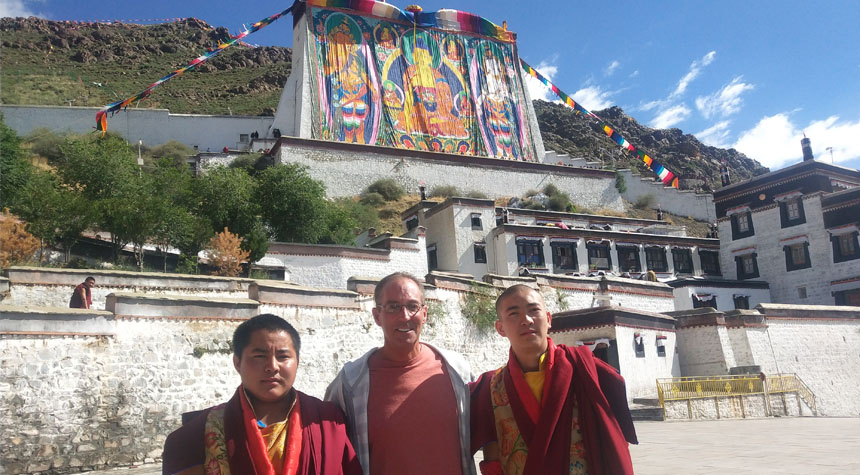 Thangka Buddha Exhibition in Tashilhunpo Monastery
Thangka Buddha Exhibition in Tashilhunpo MonasterySummer Palace of Panchen Lamas - Summer Residence of the 10th Panchen Lama
At the southwestern end of Shigatse lies the former summer palace of the Panchen Lamas, built in 1844 by the seventh Panchen Lama. Known in Tibetan as the Dechen Kalzang Podrang, the palace is famous for depicting the 18 levels of Hell in Tibetan Buddhism in graphic details. While the palace may not match the elegance of the Potala or Norbulingka, it is well worth a visit while you are in Tibet’s second city.
Sakya Monastery - Magic Place for Manuscripts, Artwork and Artifacts
Sakya Monastery is the center of the Sakya School of Tibetan Buddhism and the first Sakyapa Monastery in Tibet. Sakya, which means “Grey Soil” in Tibetan, is a monastery divided by the Zhongqu River, with buildings on both northern and southern shores. However, the northern buildings, which sit on the Bonbori Hill and were built in 1073, have long since been destroyed, with only a Yuan Dynasty hall remaining. The main monastery today lies on the southern banks, in the Zhingqu River valley, and was built in 1288 by the 5th throne holder of the Sakya Sect. Rulers of Tibet for more than 700 years, the Sakya monastery holds a vast collection of precious artworks and more than 3,000 Buddhist sutra scrolls.
Rongbuk Monastery - Tibet Highest Monastery & Best Place to Shoot Mt. Everest
Rongbuk Monastery is one of the later monasteries to be built in Tibet, and was started in 1899, with construction being completed in 1902. The monastery was built on the site of ancient meditation caves and huts that have long been used by Buddhist monks and nuns since the early 18th century. Sitting in the shadow of the world’s highest mountain, Mount Everest, the monastery is a sacred site for the Buddhist Sherpas of the Himalayas, many of whom still journey to the monastery every year on an annual pilgrimage. The monastery is actually one of the best places from which to view and photograph the summit of Mount Everest, and at 4,980 meters above sea level, it is listed as the “official” Highest Buddhist Monastery in the world, though there are several that sit at higher elevations in Tibet.
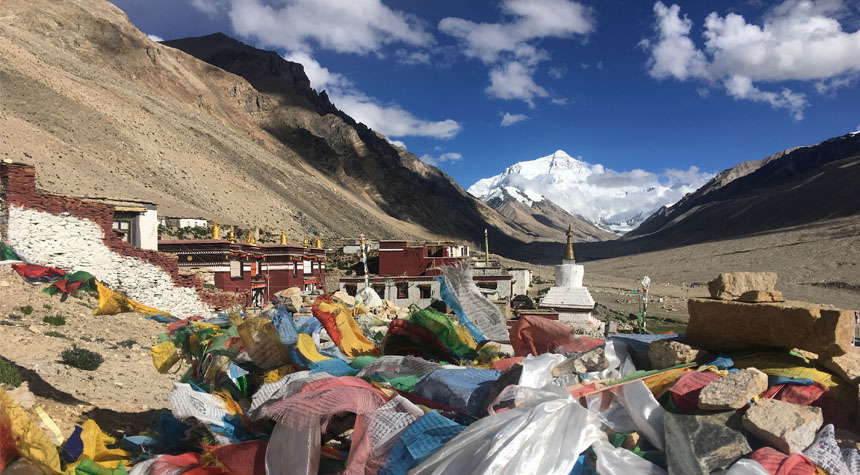 Rongbuk Monastery is one of the best places to shoot Mount Everest.
Rongbuk Monastery is one of the best places to shoot Mount Everest.How to Plan a Shigatse Monastery Tour?
A tour of Shigatse would not be complete without visits to some of the greatest monasteries in the prefecture. Shigatse has some amazing sights for travelers to the area, and a three-day tour of the area would normally include all of the best monasteries. On the first day of the area tour, you would get to visit the famous Kumbum Stupa in the Pelkor Chode Monastery, the Gyantse Dzong, and the museum at the former manor house of the Pala Family.
Day two would include a visit to the Tashilhunpo Monastery, and the stunning Shigatse Dzong, as well as taking in the amazing summer palace of the Panchen Lamas. On the third day, you would be able to travel to the famous Sakya Monastery, home of one of the most prestigious sects of Tibetan Buddhism, and then on to the Rongbuk Monastery at the foot of Mount Everest. This would also give you the opportunity to get some great photos of the world’s highest mountain. Check the details of 8 days Lhasa Everest tour with great monasteries. Our Tibet tours are all open to customizing, and if there is another place you would like to visit, such as the Shalu or Nartang Monasteries, we can easily arrange this for you.
Tibetan Monastery in Ngari
Three Monastery in Kailash Kora
The outer kora route of the sacred Mount Kailash has three stunning monasteries, set at high altitude locations on three major points around the mountain. The first you will come across is the Chuku Monastery, at an altitude of 4,820 meters. Founded in the 13th century, the legends tell of the famous artifacts of the monastery that dissuaded the invading armies from keeping them through magic. Notably, the conch shell, teapot, and statue of the legends are still visible inside the monastery.
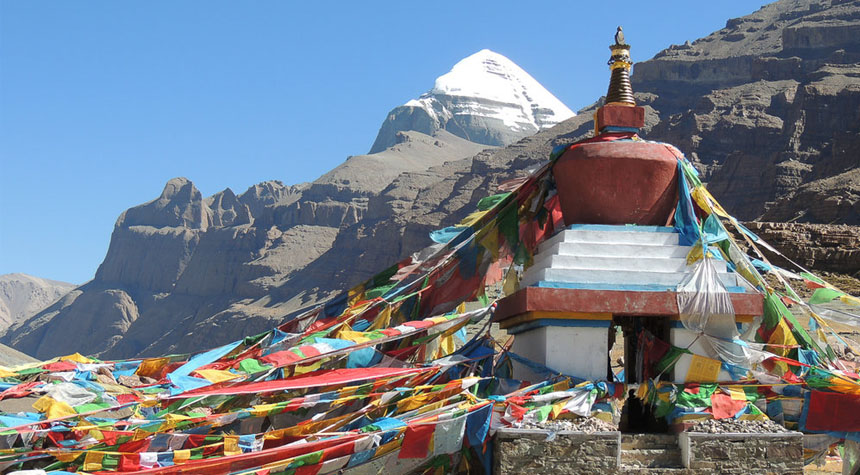 Mount Kailash
Mount KailashThe Drirapuk Monastery lies at an altitude of 4,950 meters, and the name means “Cave of the female yak”. While the monastery does have a number of ancient relics, it is more important in Tibet as one of the two resting places for pilgrims making the trek around the sacred mountain.
Dzultripuk Monastery, at 4,790 meters, lies just 11 kilometers from Darchen and the end of the trek around the sacred mountain, and is the second stopping point for travelers and pilgrims on the kora route.
Seven Monasteries in Manasarovar Kora
The kora around Lake Manasarovar, to the south of Mount Kailash, has seven separate monasteries around its shores, five of which are used as stopping places for the pilgrims and tourists attempting the long four-day trek around the lake.
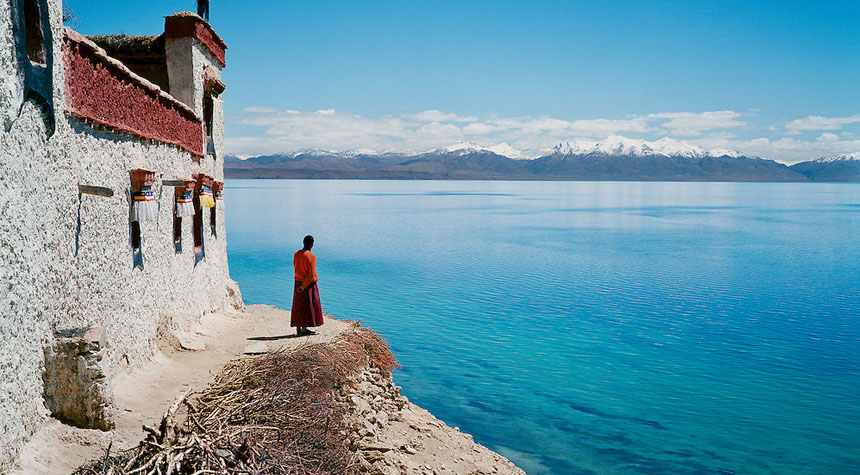 Gossul Monastery in Manasarovar Kora
Gossul Monastery in Manasarovar KoraThe trek starts at Chiu Monastery, on the northwest shores, which is said to have been built on the site where Guru Rinpoche is said to have stayed in meditation for seven days. From there, you trek to Cherkip Monastery and Langbona Monastery on the northern shores, where you can rest before continuing on to Hor Town. In the morning, you will follow the lakeshores southwest to stop at Seralung Monastery for the night. The following day you trek to Yerngo Monastery, before continuing on to stop for the night at Trugo Monastery. On the last day, you will hike to Gossul Monastery for a break at lunch, and then continue on to the finish at Chiu Monastery.
Tholing Monastery - Oldest Monastery in Ngari
Located in Zanda County of Ngari, Tholing Monastery is the oldest monastery in western Tibet, and dates back to around 997 AD, when it was commissioned by the second king of the ancient Guge Kingdom, Yeshe-O. As well as being the capital of the kingdom, the monastery was also visited by the Indian sage, Atisha, who spent three years at the monastery in the 11th century to aid in the revival of Buddhism in Tibet.
How to Plan a Ngari Monastery Tour
The best trip to Ngari is the long tour that takes you to the sacred Mount Kailash and the Holy Lake Manasarovar. This amazing tour takes you all the way to Mount Kailash, and gives you the opportunity to trek around the sacred Kailash Kora, a route traveled by Buddhist and Hindu pilgrims for thousands of years. The tour also brings you to Lake Manasarovar, where you can follow the Buddhist traditions of taking a bath in the lake to wash away the sins of an entire lifetime. Check the details of 15 days Lhasa Kailash Manasarovar tour with great monasteries . If there are other places in Ngari that you want to see, we can extend the tour and customize it to cover such awesome locations as the ruined Guge Kingdom, the ancient Tholing Monastery, and the stupendous Zanda Earth Forest land formations.
Tibetan Monastery in Shannan
Samye Monastery - First Buddhist Academy in Tibet & Cradle of Tibetan Buddhism
Founded in 779 AD, Samye Monastery lies in a green valley amongst barren mountains surrounded by a village. The monastery was modeled on the University of Otantapuri in India, is designed in the form of a Mandala, a Buddhist representation of the universe. Located on the foot of Mt. Hepo Ri, on the north bank of the Yarlung Tsangpo River in Zharang County, Samye Monastery is about 38 kilometers from Tsedang.
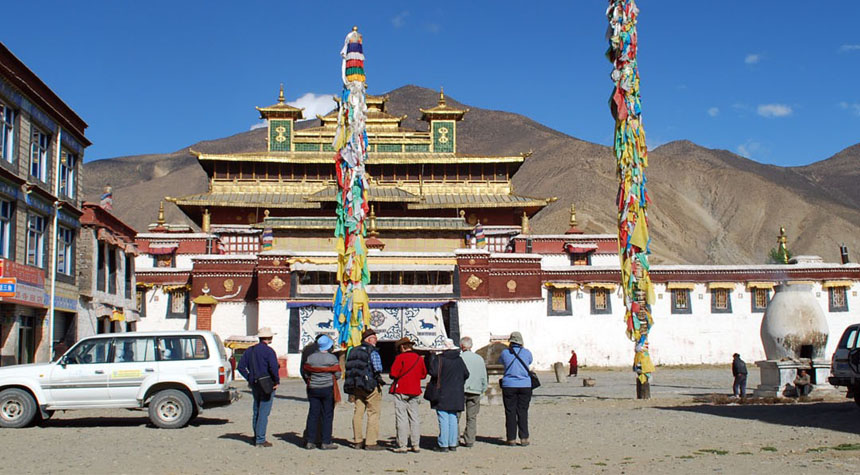 Samye Monastery
Samye MonasteryChim-puk Hermitage - Meditation Retreat for Guru Rinpoche
A veritable warren of caves that lies to the northeast of Samye Monastery, the Chim-puk Hermitage was once a retreat for meditation for Guru Rinpoche and his consort. It is said that the area contains 108 meditation caves, 108 natural spring mouths, and 108 burial grounds, though they have not been counted recently. Hand and foot prints in the rocks around the caves can be found everywhere, and the giant footprint on the famous Guruta Rock is said to have been left by Padmasambhava himself.
Tradruk Monastery - One of the Earliest Buddhist Monasteries in Tibet & Famous for Peal Thangka
Located in Nedong County, the Tradruk Temple is one of the oldest temples in Tibet, and some say it even predates the sacred Jokhang Temple in Lhasa. The largest of the remaining Royal constructions of the great kings of the Yarlung Valley, it is believed to have been built by Songtsen Gampo before he moved the capital of the empire to Lhasa.
How to Plan a Shannan Monastery Tour
A trip to Shannan Prefecture to visit the temples and monasteries can normally be done in just one day, and you will get to visit Samye, Chim-puk, and Tradruk all together, as they are not located far apart. Check the details of 6 days Lhasa Samye Monastery tour. If you are planning on exploring other destinations in the area, including the amazing and very ancient Yumbulakang Palace, said to be the oldest building in Tibet, we can cater to your needs with a customized tour just for you.
Dos and Don’ts While Visiting Monastery in Tibet
When visiting a monastery in Tibet, there are certain things you need to know, so that you can enjoy your visit, and not upset or offend the locals and the monks.
The first thing to do is to learn more about Buddhism and monasteries in Tibet. We have a lot of articles you can learn from in our blog pages. It is also useful to know that, if the locals are avoiding doing something, it is a good indicator that it is a taboo, so you should really avoid doing it too.
Tibetans perform kora circuits in a clockwise direction, so you should always follow suit, unless this is a Bon Site, so you should travel anti-clockwise. And unless you are a Buddhist and understand the rituals, it is not advisable to perform the prostrations you will see pilgrims doing in front of monasteries and temples. Be content to watch.
Do not take photos without permission, especially of the monks, as it is a major taboo. You will also need to ask permission to take photos inside monasteries and temples, though the outside is normally fine. And dressing appropriately in very important, especially for women. Tibetans are very conservative, so your arms, legs, and shoulders should be covered when entering a holy place.
Related Readings:
Most Recommended Tibet Monastery Tours
-
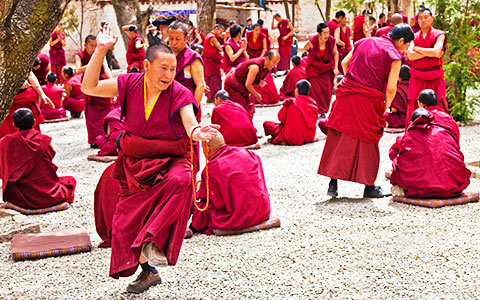 HOT6 Days Lhasa Three Major Monasteries Small Group Tour with Tibet Train Experience
HOT6 Days Lhasa Three Major Monasteries Small Group Tour with Tibet Train ExperienceTibet train (from Xining) - Lhasa - Drak Yerpa - Ganden - Lhasa
Only From: USD645
View Details -
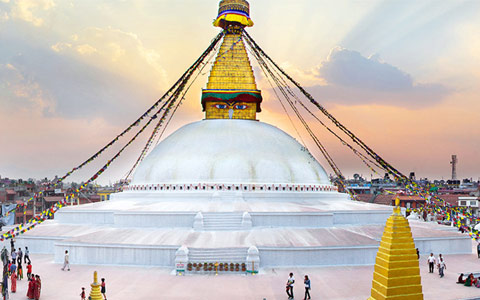 HOT7 Days Lhasa to Kathmandu Overland Small Group Tour
HOT7 Days Lhasa to Kathmandu Overland Small Group TourLhasa - Shigatse - Everest Base Camp - Gyirong Border - Kathmandu
Only From: USD989
View Details -
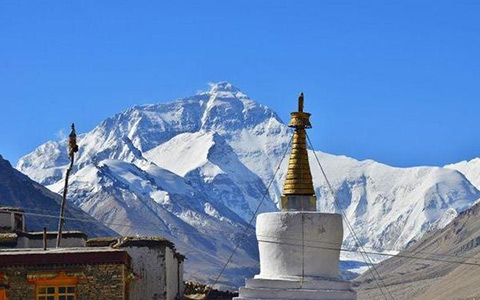 HOT8 Days Tibet Everest Small Group Tour
HOT8 Days Tibet Everest Small Group TourLhasa - Yamdrok Lake - Gyantse - Shigatse - Everest Base Camp - Dinggye - Sakya - Shigatse - Lhasa
Only From: USD949
View Details -
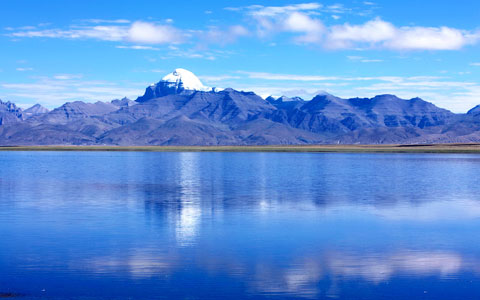 HOT15 Days Tibet and Mount Kailash Small Group Tour
HOT15 Days Tibet and Mount Kailash Small Group TourLhasa - Gyantse - Shigatse - E.B.C - Lake Manasarovar - Kailash Trek - Saga - Shigatse - Lhasa
Only From: USD2069
View Details
 BACK
BACK
0 Comment ON "Tibetan Monastery: how to plan a Tibet Monastery tour"